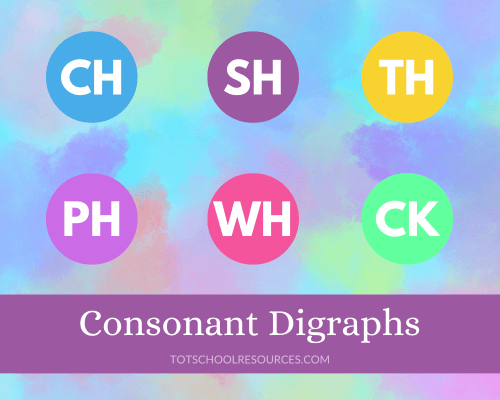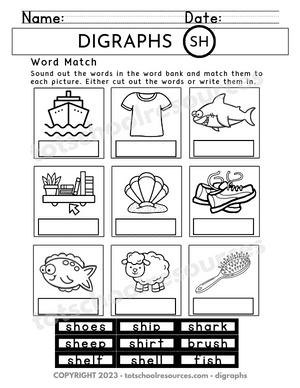
Consonant digraphs are an important phonics tool for kids to learn.
It will help them decode a greater number of words so it’s an important tool for kids to have in their toolbox. Learning digraphs will make it easier when they are trying to sound out or decode words.

This post contains affiliate links. If you make a purchase after clicking one of my links I may earn a commission at no additional cost to you.
A digraph is when two letters combine to make a single sound. It’s also usually a new sound. There are both vowel and consonant digraphs. Here we are just focusing on common consonant digraphs. There are also vowel digraphs.
For kindergarten and 1st grade kids generally just learn the most common consonant digraphs such as CH, SH, TH, PH, WH, & CK. These are the ones they will come across most often.
 consonant digraphs pin image" width="300" height="450" />
consonant digraphs pin image" width="300" height="450" />
This is how I taught them to my homeschooled kindergartner. But, you can easily adapt it for a classroom or small group.
Many of these consonant digraph worksheets could be used as a learning center or sent home as homework or extra learning opportunities.
For homeschoolers they could be used as part of a phonics lesson or used as part of a morning menu.
Before I show or mention the digraph we’re working on I introduce words using the chart below. Have the kid(s) say all the words and listen for a sound that they all have in common.

Once they’ve identified the sound I let them know what the digraph is, what two letters combine to make that sound.
I have an identical worksheet with the digraph filled in but my daughter preferred to write it in herself. Then we hung this up on our wall to review for the next few days.
Next, I presented a page of words matched with pictures. My daughter’s job was to find and circle the digraph in each word.
We usually do this activity right after the new digraph is introduced. It also gives us a chance to go over words that contain the digraph so I know that she can properly identify all of the consonant digraph words and images used in this lesson.

Then, you can discuss where the digraph is found. Many can be found at the beginning, end, or even the middle of a word. However, CK is only found at the end of words.
The third task is probably the one that was the most challenging for us. This activity gives practice sounding out words that contain the digraph as well as some handwriting practice or copy work if you choose.
The child needs to sound out each word and then match it to the correct picture.
If you want to do some extra writing practice you can have kids write each word under the picture. But, you could also do this as a cut and paste activity.

We usually do this activity on a different day after reviewing what the digraph is that we are working on.
Our last worksheet activity is identifying which words on a page contain the digraph. Some of the words are ones that we’ve seen earlier in the lesson and others are new.

It requires kids to identify the words and listen for the digraph sound. Then they can circle or color the words that do contain the digraph.
Throughout our time working on a particular digraph we also look for it in books that we’re ready or in signs as we are out and about.